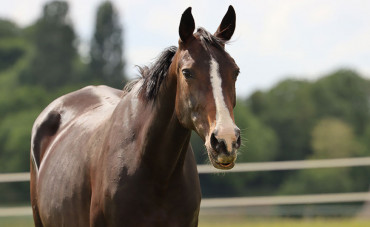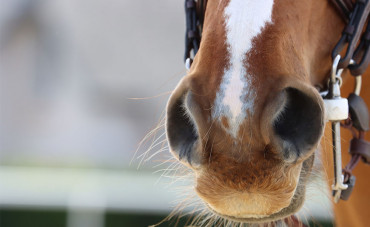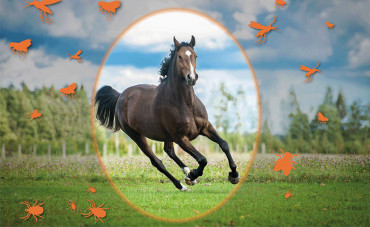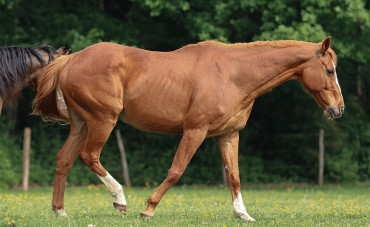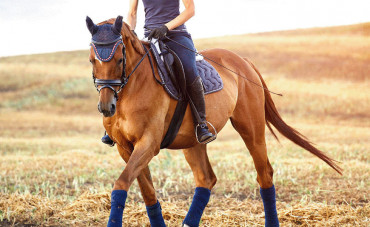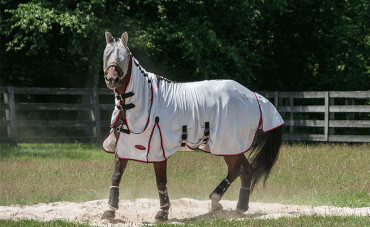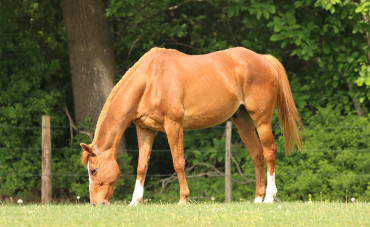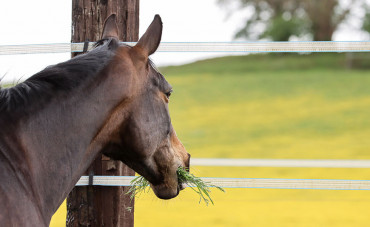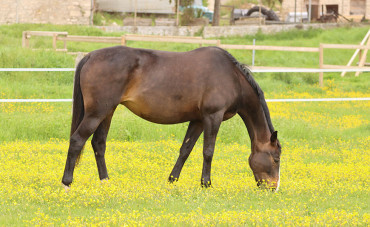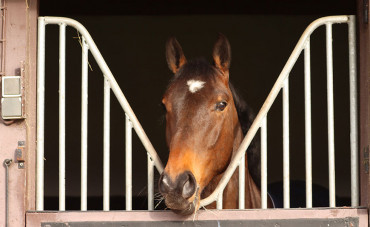If your horse’s body is being put under pressure due to increasing work and training for competitions, one of the most important things to consider is the increased use of their joints.
Longer and more intense sessions will increase stress on your horse’s joints. Likewise, outdoor activities or long rides will increase demand on the joints, as well as the risk of injuries to the feet. This may result in joint pain for your horse.
How can you tell if your horse’s joints are overworked?
When your horse’s joints are overworked, the body will respond with inflammation. If this inflammation is not managed, it can lead to arthritis and, later, osteoarthritis. Osteoarthritis is the response of joint bones to overuse or simply to the wear and tear associated with age. It can affect both young and older horses. It is characterised by the breakdown of cartilage and wear and tear of the bones, resulting in pain. The synovial fluid will also be inflamed. Your horse will therefore move less freely as the joint’s mechanical function is impaired, though it will also voluntarily limit its movements to avoid causing pain.
Joint inflammation in horses can be identified by the following symptoms:
- Heat: the affected joint will be warmer than its neighbouring joints. You can detect this by placing the palm of your hand on the joint. You can then compare the affected joint to a joint on the neighbouring limb to verify the temperature difference.
- Swelling: inflammation may also result in localised swelling. For example, in the fetlocks, this inflammation may be reflected by soft tumours at the joints.
- Pain:
- Handling: this pain may be expressed in your horse’s partial or total refusal to flex the joint. Bending this zone will be painful. As such, it will refuse or struggle to correctly offer you its limbs during feet cleaning.
- Lameness: your horse may relieve the affected limb to limit pain during movement and therefore present with lameness.
- Stiffness: your horse will not necessarily present with obvious lameness, but they may have a tight stride or stiffness at the beginning of work, as well as during. It’s important to remember that the back is also made up of joints that can be painful. Osteoarthritis in the back may be expressed as back pain. Joint pain may be reflected in reduced performance, repeated jumping faults, refusals and resistance during certain exercises.
Your horse may present one or several of these signs. Remember that joint inflammation can develop both in horses with and without osteoarthritis. When this inflammation becomes chronic, it is then that cartilage wear and damage will allow osteoarthritis to develop.
How do you protect your horse’s joints?
- Exercise: the intensity of physical activity, as well as the exercises you ask your horse to carry out, can put more or less strain on your horse’s joints. Warming up helps to avoid cold injuries. It’s important to vary stresses throughout the session and carry out the most complex exercises—and therefore the most demanding—when the horse is fully warmed up. Throughout the week, alternating heavy sessions with less demanding sessions or rest days will help to limit the onset of chronic inflammation. Remember that certain exercises like tight circles (lunging or mounted), collection exercises, repeated jumps and/or very high obstacles are some of the exercises that will put your horse’s body under the most stress. Outdoor work can also increase stress on your horse, particularly on uneven ground. A programme that includes a good warm-up, recovery periods throughout the session and alternating heavy exercise days with less demanding sessions will make it possible to limit the occurrence of joint pain over time.
- Shoeing and foot care: even though the hoof is not a joint, it has a direct influence on the joints above it. Foot balance depends on various elements: the length of the toe, the height of the heels, the verticality of the hoof walls, etc. A balanced foot will allow your horse to avoid exerting additional tensions on leg joints. Foot maintenance and, if necessary, specific shoeing implemented by your farrier can also allow you to correct faults in form, as well as in your horse’s posture. This correction avoids causing significant stress to certain joints, which can lead to joint pain. Likewise for horses already suffering from osteoarthritis, certain shoes—called orthopaedic shoes—offer the affected joint relief and therefore support the horse’s movement. Finally, certain specific shoes can also provide cushioning when the horse places its foot on the ground and therefore avoid repeated trauma—particularly on hard surfaces.
- Protection: joint trauma can also be the result of an accident or impact during work. Certain horses with conformation defects will tend to knock their legs together during work, causing them to “touch” each other. Protections will make it possible to limit these injuries, whether self-inflicted or caused by a fall, knocking the bar in showjumping or a kick from another horse.
- Recovery: to limit the development of osteoarthritis, it’s important to limit the onset of chronic inflammation. One such method promotes the reduction of any inflammation that may arise after a working session in which the joints have been put under pressure. In human athletes, we apply cold after a workout or if a joint is painful. This can either be with an icepack placed on the painful area, or by taking an ice bath in which the athlete submerges the most heavily worked areas. Though it would be difficult to carry out the same procedure in horses, we can do something similar. An ice bath can be replaced with a cold shower, focusing on the joints (and tendons). If you have a watercourse with passable terrain nearby, allowing your horses’ limbs to remain in the water for a few minutes will also promote recovery. There are also “boots” that allow you to submerge your horse’s leg in cold water. Food supplements: using a food supplement can help to support your horse’s joints and promote joint mobility.
- Food supplements containing glucosamine, chondroitin (chondroitin sulphate) and collagen can provide the elements necessary for the proper functioning of the cartilage and joint and therefore avoid the appearance of stiffness or musculoskeletal discomfort.
You can also find food supplements that provide nutritional support in case of stiffness in motion and therefore support your horse’s suppleness and flexibility. Some will only offer support in case of stiffness, like Harpagyl, a product based on devil’s claw and omega 3 fatty acid, with a 48-hour detection time. Another product such as Ekyflex Nodolox will help mitigate stiffness, but will also support your horse’s recovery and can be used in competition.
If the joint pain becomes more significant, veterinary intervention will be required. Your vet will then be able to make a diagnosis. A radiographic exam can make it possible to visualise osteoarthritis, reflected in a reduction in joint space, joint damage and bone remodelling. Medical treatments to relieve joints are available, such as non-steroidal anti-inflammatories. Your vet will be able to make intra-joint injections of steroidal anti-inflammatories such as corticoids, along with hyaluronic acid to lubricate joints. You can also make use of treatments to help treat osteolysis, linked to osteoarthritis, such as bisphosphonates.

